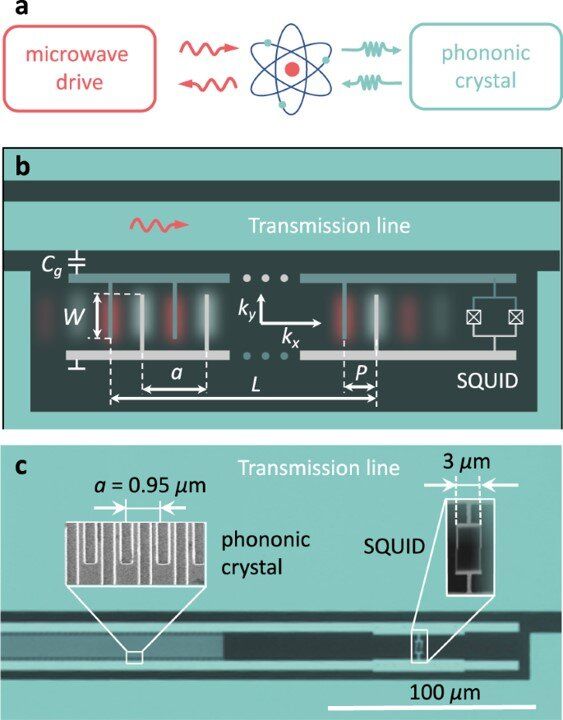Researchers have recently displayed the interaction of superconducting qubits; the basic unit of quantum information, with surface acoustic wave resonators; a surface-wave equivalent of the crystal resonator, in quantum physics. This phenomena opens a new field of research, defined as quantum acoustodynamics to allow the development of new types of quantum devices. The main challenge in this venture is to manufacture acoustic resonators in the gigahertz range. In a new report now published on Nature Communications Physics, Aleksey N. Bolgar and a team of physicists in Artificial Quantum Systems and Physics, in Russia and the U.K., detailed the structure of a significantly simplified hybrid acoustodynamic device by replacing an acoustic resonator with a phononic crystal or acoustic metamaterial.
The crystal contained narrow metallic stripes on a quartz surface and this artificial atom or metal object in turn interacted with a microwave transmission line. In engineering, a transmission line is a connector that transmits energy from one point to another. The scientists used the setup to couple two degrees of freedom of different nature, i.e. acoustic and electromagnetic, with a single quantum object. Using a scattering spectrum of propagating electromagnetic waves on the artificial atom they visualized acoustic modes of the phononic crystal. The geometry of the device allowed them to realize the effects of quantum acoustics on a simple and compact system.
